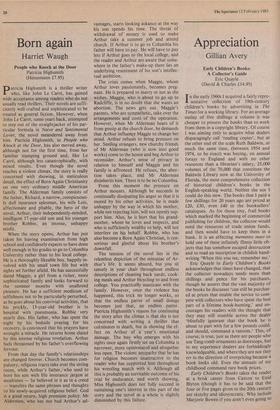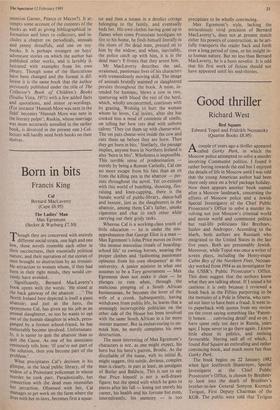Appreciation
Gillian Avery
Early Children's Books: A Collector's Guide Eric Quayle (David & Charles £14.95)
In the early 1960s I acquired a fairly repre- sentative collection of 19th-century children's books by advertising in The Times for a working library. For an average outlay of five shillings a volume it was cheaper to possess the books than to work from them in a copyright library. Of course I was aiming only to acquire what dealers disparagingly call 'reading copies', but at the other end of the scale Ruth Baldwin, at much the same time, (between 1954 and 1974, to be exact) was buying, on annual forays to England and with no other resources than a librarian's salary, 25,000 volumes of the 70,000 that constitute the Baldwin Library now at the University of Florida, the most comprehensive collection of historical children's books in the English-speaking world. Neither she nor I could do this now. The books that I paid a few shillings for 20 years ago are priced at £20, £30, even £40 in the booksellers' catalogues. As for those tiny, frail books which marked the beginning of commercial publishing for children, the collector would need the resources of trade union funds, and then would have to keep them in a bank. It is an affecting memento inori to hold one of these infinitely flimsy little ob- jects that has somehow escaped destruction and to read an inscription in childish hand- writing 'When this you see, remember me.'
Eric Quayle in Early Children's Books acknowledges that times have changed, that the collector nowadays needs more than shillings and pence for his purchases, though he asserts that the vast majority of the books he discusses 'can still be purchas- ed at prices that enable the novice to com- pete with collectors who have spent the best part of a lifetime book-hunting,' and en- courages his readers with the thought that they may still stumble across the dealer 'blissfully ignorant that the book he is about to part with for a few pounds could, and should, command a ransom.' This, of course, is true, just as there are people who use Tang tomb ornaments as doorstops, but in my experience dealers are forbiddingly knowledgeable, and where they are not they err in the direction of overpricing because a book looks old. Even the annuals of my childhood command rare book prices.
Early Children's Books takes the reader at a brisk canter from Caxton to Enid Blyton (though it has to be said that the four or five pages given to the 20th century are sketchy and idiosyncratic. Why include Marjorie Bowen if you aren't even going to mention Garner, Pearce or Mayne?). It at- tempts some account of the contents of the books as well as giving bibliographical in- formation and hints to collectors, and in- cludes a chapter on periodicals, annuals and penny dreadfuls, and one on toy- books. It is perhaps strongest on boys' adventure stories on which the author has published other works, and is lavishly il- lustrated with examples from his own library. Though some of the illustrations have been changed and the format is dif- ferent it is the same book that the author previously published under the title of The Collector's Book of Children's Books (Studio Vista, 1971) with a few added facts and quotations, and minor re-wordings. (For instance 'Hannah More was next in the field' becomes 'Hannah More was next in the literary pulpit'; Ruskin, whose marriage was more accurately annulled in the earlier book, is divorced in the present one.) Col- lectors will hardly need both books on their shelves.







































 Previous page
Previous page